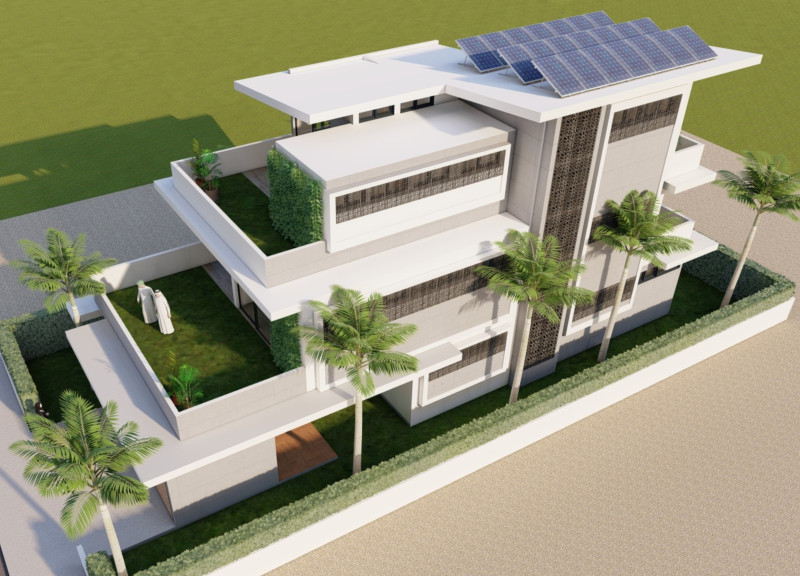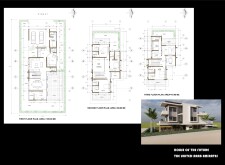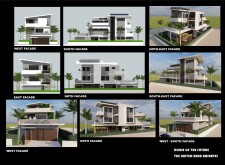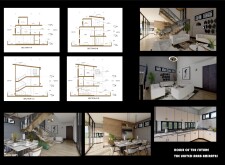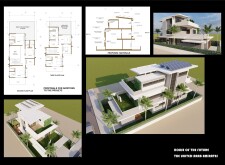5 key facts about this project
### Project Overview
Located in the United Arab Emirates, the design for the House of the Future aims to create a modern residential environment that emphasizes sustainability and functionality. The three-story structure is meticulously organized to accommodate a contemporary lifestyle while engaging with the surrounding landscape. The design integrates spaces that promote both communal interaction and private retreat, reflecting the needs of modern inhabitants.
### Spatial Strategy and Organization
The layout is characterized by a thoughtful configuration that facilitates a connection between indoor and outdoor areas. The first floor encompasses communal spaces, including a living room, dining area, and kitchen, all of which offer direct access to an outdoor garden, enhancing opportunities for social engagement. The second floor features private zones, comprising bedrooms and bathrooms, ensuring adequate natural light and privacy. The third floor is dedicated to recreational use, showcasing a rooftop terrace and additional flexible living spaces that support both leisure and entertainment activities.
### Material Selection and Sustainability
Materiality plays a crucial role in the house's design, emphasizing both durability and environmental responsibility. Concrete is utilized for structural elements, providing thermal mass, while large glass panels maximize daylight and minimize reliance on artificial lighting. Aluminum frames are chosen for their lightweight and corrosion-resistant properties, suitable for the regional climate. Natural stone is featured in flooring and accent walls for aesthetic durability, and wood is incorporated in cabinetry and flooring to add warmth. The installation of solar panels on the roof reflects a commitment to harnessing renewable energy, aligning with sustainable design principles.
Through these design elements and material choices, the House of the Future represents a model for future residential developments, addressing modern lifestyle requirements while prioritizing environmental consciousness.


